 (If you need writing dissertation conclusion that explores the secrets of recent star tennis players, our articles are good references for such assignments.)
(If you need writing dissertation conclusion that explores the secrets of recent star tennis players, our articles are good references for such assignments.)
Nicknamed “Little Miss Poker Face” for her deadpan expression on the tennis court, Wills was anything but impassive. A force to be reckoned with, she ruled the game in the 1920s and ’30s, counting two Olympic golds, eight Wimbledon singles titles, and seven U.S. National Championship titles among her stunning wins. But her interests far surpassed tennis. She was a novice poet and painter, and eventually found herself in the path of muralist Diego Rivera. She posed for the central figure in Rivera’s “Allegory of California,” but the mural drew heated criticism for using the face of a real woman to represent California. In his autobiography My Art, My Life, Rivera defended his choice: “…she seemed to represent California better than anyone I knew — she was intelligent, young, energetic, and beautiful.” At the end of her life, Wills gave $10.5 million to Berkeley to establish the Helen Wills Neuroscience Institute. In making her gift, she said, “What university has a better reputation in research than Berkeley? We can find the answers to why we are the way we are, and gain a better understanding of who we are.”
Category: Science
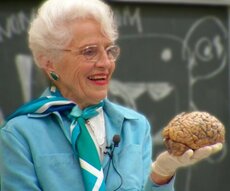 As a world-renowned authority on the human brain, it’s no surprise that Diamond carries one around in a hatbox. Possibly Berkeley’s oldest active professor, she has been filling her anatomy classes for more than 50 years, and her Integrative Biology 131 series has become a YouTube sensation. Reflecting on becoming a teacher, she wrote, “The first time a medical student asked me a question … I felt a deep, warm glow of satisfaction radiate through my body. This is where I belong.” One of Diamond’s major discoveries — that the brain can continue to develop at any age with proper stimulation — revolutionized thinking about the potential of the aging brain. She also spent decades researching how environmental factors can alter the brain’s anatomy — an idea that took her to Cambodia to improve the nutrition and learning of orphans in a remote Buddhist community. But her journey to academic stardom was not easy. A pathologist strung her along for years when she requested samples of Albert Einstein’s brain. “He wasn’t sure that I was a scientist. This is one thing that you have to face being a woman,” she told the San Francisco Chronicle in 2010. But she succeeded, and has not stopped spreading her knowledge with creativity and passion.
As a world-renowned authority on the human brain, it’s no surprise that Diamond carries one around in a hatbox. Possibly Berkeley’s oldest active professor, she has been filling her anatomy classes for more than 50 years, and her Integrative Biology 131 series has become a YouTube sensation. Reflecting on becoming a teacher, she wrote, “The first time a medical student asked me a question … I felt a deep, warm glow of satisfaction radiate through my body. This is where I belong.” One of Diamond’s major discoveries — that the brain can continue to develop at any age with proper stimulation — revolutionized thinking about the potential of the aging brain. She also spent decades researching how environmental factors can alter the brain’s anatomy — an idea that took her to Cambodia to improve the nutrition and learning of orphans in a remote Buddhist community. But her journey to academic stardom was not easy. A pathologist strung her along for years when she requested samples of Albert Einstein’s brain. “He wasn’t sure that I was a scientist. This is one thing that you have to face being a woman,” she told the San Francisco Chronicle in 2010. But she succeeded, and has not stopped spreading her knowledge with creativity and passion.
Education, Science
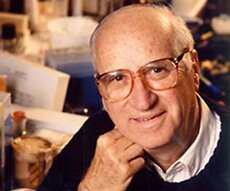 Though his father helped lead Levi Strauss & Co. for decades, Koshland built his life around science, not jeans. A third-generation Cal grad, he was a longtime professor of molecular and cell biology at Berkeley and a brilliant scientist known for his work on proteins and enzymes. In the 1980s, he spearheaded a massive reorganization of 11 biology departments that included a new curriculum to reflect advances in genetics and protein interactions. A subsequent campaign renovated one campus building and funded two others, one of which is named in Koshland’s honor. As his colleague Robert Tjian said, “People thought the reorganization was impossible, and I think no one else could have pulled it off.” Koshland also served as the editor of Science from 1985–1995, turning “a good, but stodgy journal” into the nation’s leading voice of science. Extending his vision and generosity beyond Berkeley, he established a scholarship program for San Francisco public high school students. Nga Pham, a 2012 recipient, said in a video, “This is the first time that I’ve wanted to go to college so bad. Even though I only came here two years ago, I realized that there’s nothing that I cannot do.” Among Koshland’s many awards are the National Medal of Science in 1990, the Berkeley Medal, and Alumnus of the Year in 1991.
Though his father helped lead Levi Strauss & Co. for decades, Koshland built his life around science, not jeans. A third-generation Cal grad, he was a longtime professor of molecular and cell biology at Berkeley and a brilliant scientist known for his work on proteins and enzymes. In the 1980s, he spearheaded a massive reorganization of 11 biology departments that included a new curriculum to reflect advances in genetics and protein interactions. A subsequent campaign renovated one campus building and funded two others, one of which is named in Koshland’s honor. As his colleague Robert Tjian said, “People thought the reorganization was impossible, and I think no one else could have pulled it off.” Koshland also served as the editor of Science from 1985–1995, turning “a good, but stodgy journal” into the nation’s leading voice of science. Extending his vision and generosity beyond Berkeley, he established a scholarship program for San Francisco public high school students. Nga Pham, a 2012 recipient, said in a video, “This is the first time that I’ve wanted to go to college so bad. Even though I only came here two years ago, I realized that there’s nothing that I cannot do.” Among Koshland’s many awards are the National Medal of Science in 1990, the Berkeley Medal, and Alumnus of the Year in 1991.
 Little did Das know as a pre-teen that his makeshift experiments using kitchen gadgets would lead to becoming Berkeley’s University Medalist — the top graduating senior — a few years later. Now 18, Das founded an undergraduate research journal, wrote and taught poetry, and brought science to underserved middle and high school students, among a whirlwind of successes that earned him more than 40 awards. A double major in bioengineering and chemical biology and a minor in creative writing, he is the youngest medalist in at least a century. “In my 30 years at Berkeley, I cannot think of a single undergraduate student who would match Ritankar’s accomplishments,” wrote chemistry professor Marcin Majda. Headed to the University of Oxford and MIT for his master’s and Ph.D., Das spoke at the Class of 2013 commencement. He said society tends to put everything into boxes labeled “success or failure. But I believe there’s a third box, and it’s called ‘not trying.’ … We must follow our ideas, even if they sound crazy or impossible.”
Little did Das know as a pre-teen that his makeshift experiments using kitchen gadgets would lead to becoming Berkeley’s University Medalist — the top graduating senior — a few years later. Now 18, Das founded an undergraduate research journal, wrote and taught poetry, and brought science to underserved middle and high school students, among a whirlwind of successes that earned him more than 40 awards. A double major in bioengineering and chemical biology and a minor in creative writing, he is the youngest medalist in at least a century. “In my 30 years at Berkeley, I cannot think of a single undergraduate student who would match Ritankar’s accomplishments,” wrote chemistry professor Marcin Majda. Headed to the University of Oxford and MIT for his master’s and Ph.D., Das spoke at the Class of 2013 commencement. He said society tends to put everything into boxes labeled “success or failure. But I believe there’s a third box, and it’s called ‘not trying.’ … We must follow our ideas, even if they sound crazy or impossible.”
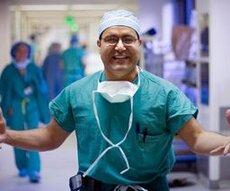 From humble beginnings in Mexico, Quiñones-Hinojosa hopped the fence into the United States at age 19 to seek a better life — and has been breaking boundaries ever since. A world-renowned neurosurgeon and researcher at Johns Hopkins University, Dr. Q, as he is known today, started off as a fieldworker in central California but refused to accept this as fate. He eventually received a scholarship to Berkeley, where he majored in psychology, then graduated cum laude from Harvard with a medical degree. Today he performs nearly 250 surgeries a year and researches neural stem cells to understand how brain cancer originates and spreads. In a 2008 Nova story, Dr. Q said, “The odds are overwhelmingly against me succeeding in this field, as far as finding a cure or a better way to treat brain cancer. But so were the chances of me sitting here with you.” His recent memoir, Becoming Dr. Q, testifies to the power of dreams, determination, and believing in people’s potential, regardless of their class or race. Find Dr. Q on Facebook or YouTube.
From humble beginnings in Mexico, Quiñones-Hinojosa hopped the fence into the United States at age 19 to seek a better life — and has been breaking boundaries ever since. A world-renowned neurosurgeon and researcher at Johns Hopkins University, Dr. Q, as he is known today, started off as a fieldworker in central California but refused to accept this as fate. He eventually received a scholarship to Berkeley, where he majored in psychology, then graduated cum laude from Harvard with a medical degree. Today he performs nearly 250 surgeries a year and researches neural stem cells to understand how brain cancer originates and spreads. In a 2008 Nova story, Dr. Q said, “The odds are overwhelmingly against me succeeding in this field, as far as finding a cure or a better way to treat brain cancer. But so were the chances of me sitting here with you.” His recent memoir, Becoming Dr. Q, testifies to the power of dreams, determination, and believing in people’s potential, regardless of their class or race. Find Dr. Q on Facebook or YouTube.
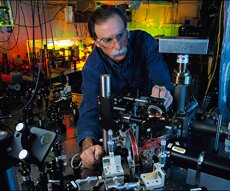 Controlling particles in a quantum world was previously thought impossible, but Wineland invented ways to measure and manipulate individual particles without destroying them — a feat that won him the 2012 Nobel Prize in Physics. Single particles lose their enigmatic properties the minute they interact with the outside world, making it difficult to observe many seemingly absurd events. Wineland’s ingenious methods involve trapping electrically charged atoms, or ions, and controlling and measuring them with light, or photons. A physicist at the National Institute of Standards and Technology (NIST) and the University of Colorado in Boulder, he shares the prize with French physicist Serge Haroche. Their research is giving shape to the dream of building a super computer based on quantum physics.
Controlling particles in a quantum world was previously thought impossible, but Wineland invented ways to measure and manipulate individual particles without destroying them — a feat that won him the 2012 Nobel Prize in Physics. Single particles lose their enigmatic properties the minute they interact with the outside world, making it difficult to observe many seemingly absurd events. Wineland’s ingenious methods involve trapping electrically charged atoms, or ions, and controlling and measuring them with light, or photons. A physicist at the National Institute of Standards and Technology (NIST) and the University of Colorado in Boulder, he shares the prize with French physicist Serge Haroche. Their research is giving shape to the dream of building a super computer based on quantum physics.
 As board chairman and CEO of Qualcomm, Jacobs is the driver behind wireless data services that pushed the cellphone from a talking tool to a handheld computer delivering data and entertainment. Innovations under his leadership include GPS capabilities, over-the-air downloading of applications, and advanced reflective display technology. Jacobs has more than 40 patents to his name.
As board chairman and CEO of Qualcomm, Jacobs is the driver behind wireless data services that pushed the cellphone from a talking tool to a handheld computer delivering data and entertainment. Innovations under his leadership include GPS capabilities, over-the-air downloading of applications, and advanced reflective display technology. Jacobs has more than 40 patents to his name.
 Little did Greider know that her research as a 25-year-old graduate student at Berkeley would ultimately win her the 2009 Nobel Prize in Physiology or Medicine. While scientists knew that chromosomes were tipped like a shoelace, they did not know how these tips prevented chromosomes from unraveling during cell division. Greider and her colleagues, with whom she shares the Nobel, discovered a new enzyme, telomerase, that adds DNA to the ends, reducing the chances of mutations and lengthening the chromosomal lifespan. Their research catalyzed an eruption of studies connecting telomerase to cancer, anemia, age-related degenerative diseases, and other illnesses. Today Greider is a professor at the Johns Hopkins School of Medicine.
Little did Greider know that her research as a 25-year-old graduate student at Berkeley would ultimately win her the 2009 Nobel Prize in Physiology or Medicine. While scientists knew that chromosomes were tipped like a shoelace, they did not know how these tips prevented chromosomes from unraveling during cell division. Greider and her colleagues, with whom she shares the Nobel, discovered a new enzyme, telomerase, that adds DNA to the ends, reducing the chances of mutations and lengthening the chromosomal lifespan. Their research catalyzed an eruption of studies connecting telomerase to cancer, anemia, age-related degenerative diseases, and other illnesses. Today Greider is a professor at the Johns Hopkins School of Medicine.
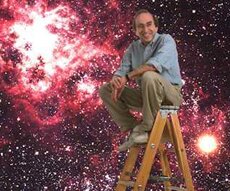 While some believe the world will end in fire, Perlmutter argues that it will end in ice. A physics professor at UC Berkeley and senior scientist at Lawrence Berkeley National Laboratory, Perlmutter led one of the two teams that simultaneously discovered the accelerating expansion of the universe. He received the 2011 Nobel Prize in Physics. The discovery led to speculation that a “dark energy” is pushing the universe apart until, in the distant future, it will be cold and dark. Perlmutter is working with NASA and the Department of Energy to build the first space-based observatory designed to understand this enigmatic force.
While some believe the world will end in fire, Perlmutter argues that it will end in ice. A physics professor at UC Berkeley and senior scientist at Lawrence Berkeley National Laboratory, Perlmutter led one of the two teams that simultaneously discovered the accelerating expansion of the universe. He received the 2011 Nobel Prize in Physics. The discovery led to speculation that a “dark energy” is pushing the universe apart until, in the distant future, it will be cold and dark. Perlmutter is working with NASA and the Department of Energy to build the first space-based observatory designed to understand this enigmatic force.
 From the classroom to the lab to the White House, Chu has addressed the enormity of climate change through the tireless pursuit of renewable and sustainable energy sources. Awarded the Nobel Prize in Physics for developing laser techniques to cool and trap atoms and molecules, Chu is now the U.S. secretary of energy. He is charged with implementing President Obama’s ambitious agenda to invest in clean energy, reduce our dependence on foreign oil, and create new jobs. The Cal Alumni Association named Chu its 2011 Alumnus of the Year. Follow him on Facebook.
From the classroom to the lab to the White House, Chu has addressed the enormity of climate change through the tireless pursuit of renewable and sustainable energy sources. Awarded the Nobel Prize in Physics for developing laser techniques to cool and trap atoms and molecules, Chu is now the U.S. secretary of energy. He is charged with implementing President Obama’s ambitious agenda to invest in clean energy, reduce our dependence on foreign oil, and create new jobs. The Cal Alumni Association named Chu its 2011 Alumnus of the Year. Follow him on Facebook.
